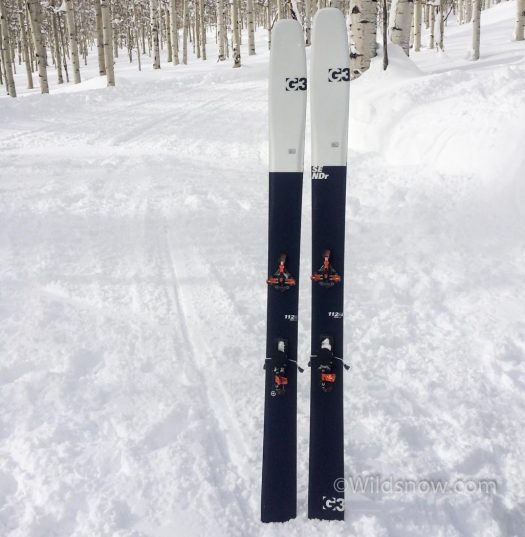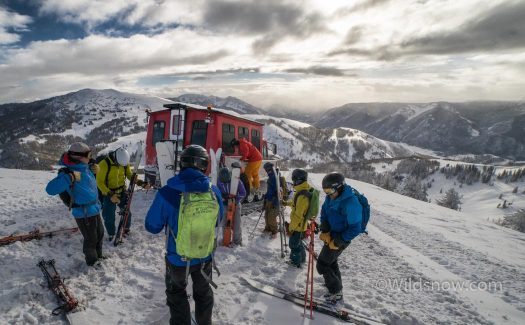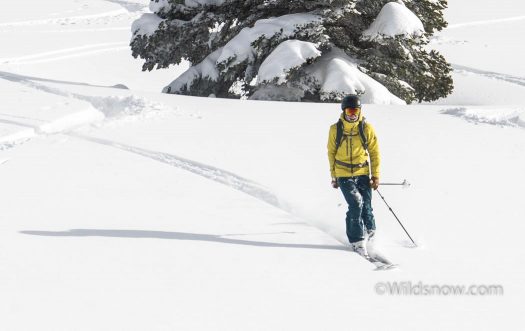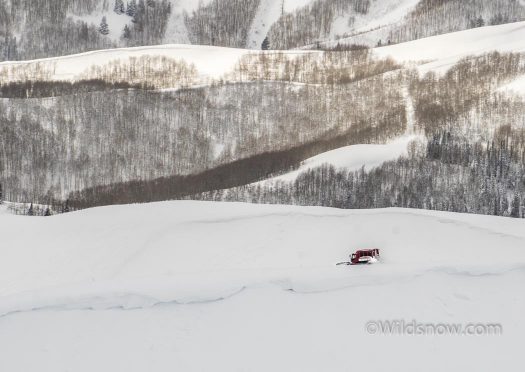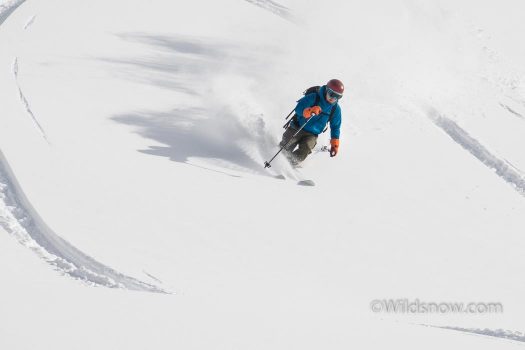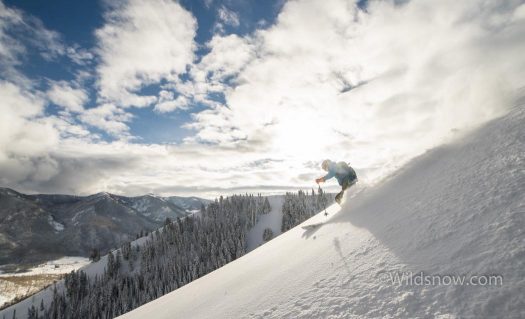
Oliver Steffen, president of G3, enjoying the perks of owning a successful ski touring gear company.
I jumped at the chance to join G3 and SCARPA for a day of “testing” at Park City Powder Cats, up in the Uinta Mountains. We skied multiple laps in beautiful Utah powder. I reviewed SCARPA’s redesigned Maestrale RS boot here. Now, my take on G3’s new backcountry ski, the SENDr.
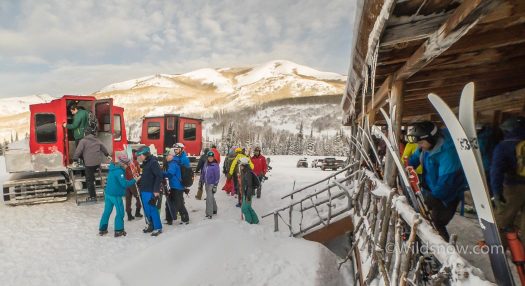
Loading up the snowcats. Park City Powder Cats operates on a 40,000 acre, family owned, sheep ranch. The rustic ranch cabin was a neat place to start the day.
G3’s new ski, the “SENDr,” is aptly named. It’s a big, stiff hard-charging board, perfect for sending. I’m a fan of stiff skis, so I was excited when I first set eyes on the SENDr.
To achieve the mystic combo of stiffness and lack of mass, SENDr utilizes carbon fiber, along with metal laminates. The SENDr (and the current Empire 115) are extremely lightweight given that they include metallics. I like G3’s Empire 115, and in some ways the SENDr is an update to the Empire. The SENDr is built with the same construction, but has an entirely different shape. They have a large turning radius, and a slightly rockered tip and tail.
While we’re on the subject of G3, there are two updates to their already solid Ion binding. First off, they have eliminated the movable plastic hooks that guided your toe into the binding. The hooks are replaced with a molded plastic bump that serves the same purpose, but is much simpler. We like simple.
Good design is subtle. At its best, it makes people’s lives easier without them even noticing. G3’s other change to the Ion exemplifies this quite nicely, I won’t get into the technical details here, but essentially they have changed the internals of the heel unit so that it can’t be turned when it is being pushed down (towards the ski). This effectively eliminates the possibility of the binding auto rotating because of a ski boot pressing down on the heel lifter in tour mode, an issue with almost all touring bindings. When turning the binding back to ski mode, the motion is unchanged. Pretty clever.
The SENDr felt more stable and less playful than the Empire. We had a wonderful time skiing mellow powder from the snowcat, but it wasn’t the ideal terrain for the SENDr. The SENDr wanted to send, preferably on something steep and deep. Throughout the day there were a few moments when I was able to get some speed, and really put some power into the ski. At those times the ski started to come into its own.
I like the fact that the tails of the SENDr are stiff, with minimal rocker. Many modern fat skis have too much rocker and turn-up in the tail, especially for the majority of people who don’t ski backwards. I could really feel the stability of the flatter tails when slashing and skiing at speed. The SENDr posses an impressive amount of power, especially for a lightweight touring ski. I’m looking forward to testing out a pair on some steep, stable (and heavy) PNW pow.
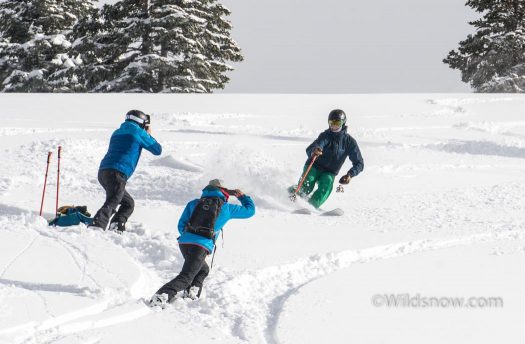
This is what happens when a bunch of ski media types go “skiing.” Reference that old song “Surf City.” Lyric change: “Two Cams for Every Boy.”
G3 SENDr
Shape: 139/112/127
Sizes: 174, 181, 188, 195
Radius: 23.5m @ 181
Weight (single): 3 lbs 12 oz @ 181
MSRP $929
Also new for next year, G3 ROAMr 100 is updated with PU sidewalls, and 108mm version will be available. I didn’t ski on the ROAMr, but it looks like a nice, a slightly skinnier (and slightly heavier) option to the SENDr.
ROAMr 100
Shape: 135/100/120
Sizes: 167, 172, 177, 182, 187
Radius: 19.6m @ 177
Weight (single): 3 lbs 15 oz @ 177
MSRP: $629
ROAMr 108
Shape: 139/108/124
Sizes: 171, 178, 185, 192
Radius: 23.6 @ 178
Weight (single): 4 lbs 4 oz @ 178
MSRP: $679
ROAMr 100 Elle (women’s specific sizing and flexes):
Shape: 135/100/120
Sizes: 167, 172
Radius: 18.5m @ 172
Weight (single): 3 lbs 12 oz @ 172
MSRP: $629
Louie Dawson earned his Bachelor Degree in Industrial Design from Western Washington University in 2014. When he’s not skiing Mount Baker or somewhere equally as snowy, he’s thinking about new products to make ski mountaineering more fun and safe.

